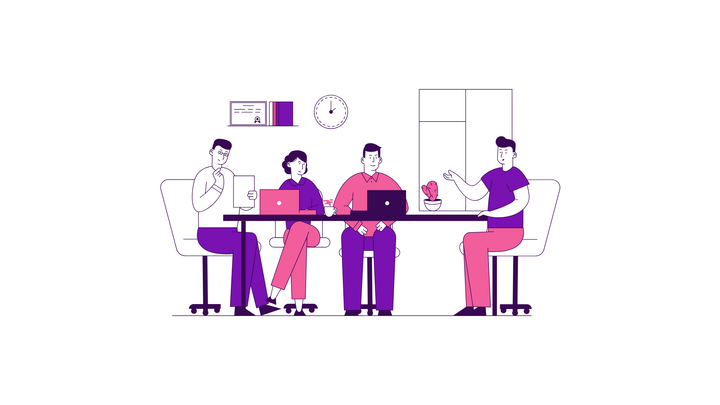What is NPS in SaaS? (Beyond Just Another Number)

Remember the last time you rated something 5 stars? Maybe it was an amazing restaurant, or that perfect cup of coffee. But did you actually tell anyone about it? That's exactly the distinction at the heart of NPS – the difference between being satisfied and being so impressed you can't help but spread the word.
What is NPS, Really?
Think of NPS like a party's vibe check. Promoters are the enthusiastic guests who bring their friends and keep the energy high. Passives are the folks who show up and have an okay time but leave early. Detractors? They're the ones texting their friends to warn them away from the "lame party."
Why Should SaaS Companies Care?
- Predictive Power: High NPS often correlates with stronger retention and organic growth through referrals
- Early Warning System: Declining NPS can signal future churn before it happens
- Benchmark Tool: NPS provides a standardized way to compare customer satisfaction across the industry
- Growth Indicator: Companies with high NPS typically grow 2.5x faster than competitors
The Three Pillars of NPS in SaaS
1. Collection Strategy
Timing matters more than you think. Successful SaaS companies don't just blast out NPS surveys randomly. They align surveys with key moments in the customer journey:
- Post-onboarding completion
- After achieving significant milestones
- Following major feature releases
- At regular intervals (usually quarterly)
- Before renewal dates
2. Analysis Framework
Smart companies look beyond the raw score to understand the story behind the numbers:
- Segment responses by user type, plan level, and usage patterns
- Track score trends over time
- Analyze verbatim feedback for patterns
- Compare scores across different features or workflows
- Correlate NPS with other key metrics like usage and support tickets
3. Action Plan
Great NPS programs aren't about collecting scores – they're about driving improvement:
- Create closed-loop feedback systems
- Develop specific action plans for each customer segment
- Set up rapid response protocols for detractor feedback
- Use promoter enthusiasm to fuel growth
- Build improvement roadmaps based on passive feedback
Common NPS Mistakes in SaaS
The Survey Timing Trap
Sending NPS surveys at predetermined intervals rather than aligning them with the customer journey. Just because it's been 90 days doesn't mean it's the right time to ask.
The Automation Overdose
Relying too heavily on automated responses and lacking personal follow-up. Your detractor doesn't want another automated "we're sorry" email.
The Context Blindness
Ignoring the circumstances around responses. A 6 from a power user hits different than a 6 from someone who just started using your product.
The Vanity Metric Syndrome
Focusing on improving the score instead of addressing the underlying issues. Gaming the system for better numbers won't drive real growth.
Pro Tip 💡
Don't just track your own NPS – monitor your competitors' customer sentiment too. When you notice patterns of dissatisfaction in their user base, you've found your opportunity to show how your solution addresses those specific pain points.
What NPS is Good for SaaS?
Understanding what constitutes a "good" NPS in SaaS requires context. Let's break down the key benchmarks and averages across the industry:
Industry Averages
The average NPS for SaaS companies in 2024 sits at 35.7, with a median of 39. However, this varies significantly based on several factors:
By Company Size:
| Revenue Range | Average NPS |
|---|---|
| $1M - $5M | 34.5 |
| $5M - $10M | 23.3 |
| $10M - $50M | 37.5 |
| $50M+ | 39.2 |
Industry-Specific Segments
Different SaaS segments show varying performance levels:
- EdTech: 47.5
- MarTech: 41
- FinTech & Insurance: 40
- HR Tech: 39.8
- CRM & Sales: 38.6
- Healthcare: 25.6
- AI & ML: 23.5
Performance Ratings
Here's how to interpret your SaaS NPS score:
| Score Range | Rating |
|---|---|
| Below 0 | Poor |
| 0-19 | Good |
| 20-49 | Favorable |
| 50-100 | Excellent |
Year-Over-Year Trends
The software and SaaS industry has maintained a stable NPS of 40 through 2024. This consistency suggests that the industry has found a reliable balance between customer expectations and service delivery.For context, world-class SaaS companies often achieve scores above 50, with some exceptional performers like Google maintaining an NPS of 50. However, remember that a score above the industry average of 35.7 already indicates strong customer satisfaction and loyalty.
The Bottom Line
NPS isn't just another metric to track – it's a framework for understanding and improving your customer relationships. While the math is simple (Promoters% - Detractors%), the real value lies in how you collect, analyze, and act on the feedback. After all, in SaaS, sustainable growth isn't just about acquiring new customers; it's about creating enthusiastic advocates who bring those new customers to you.



